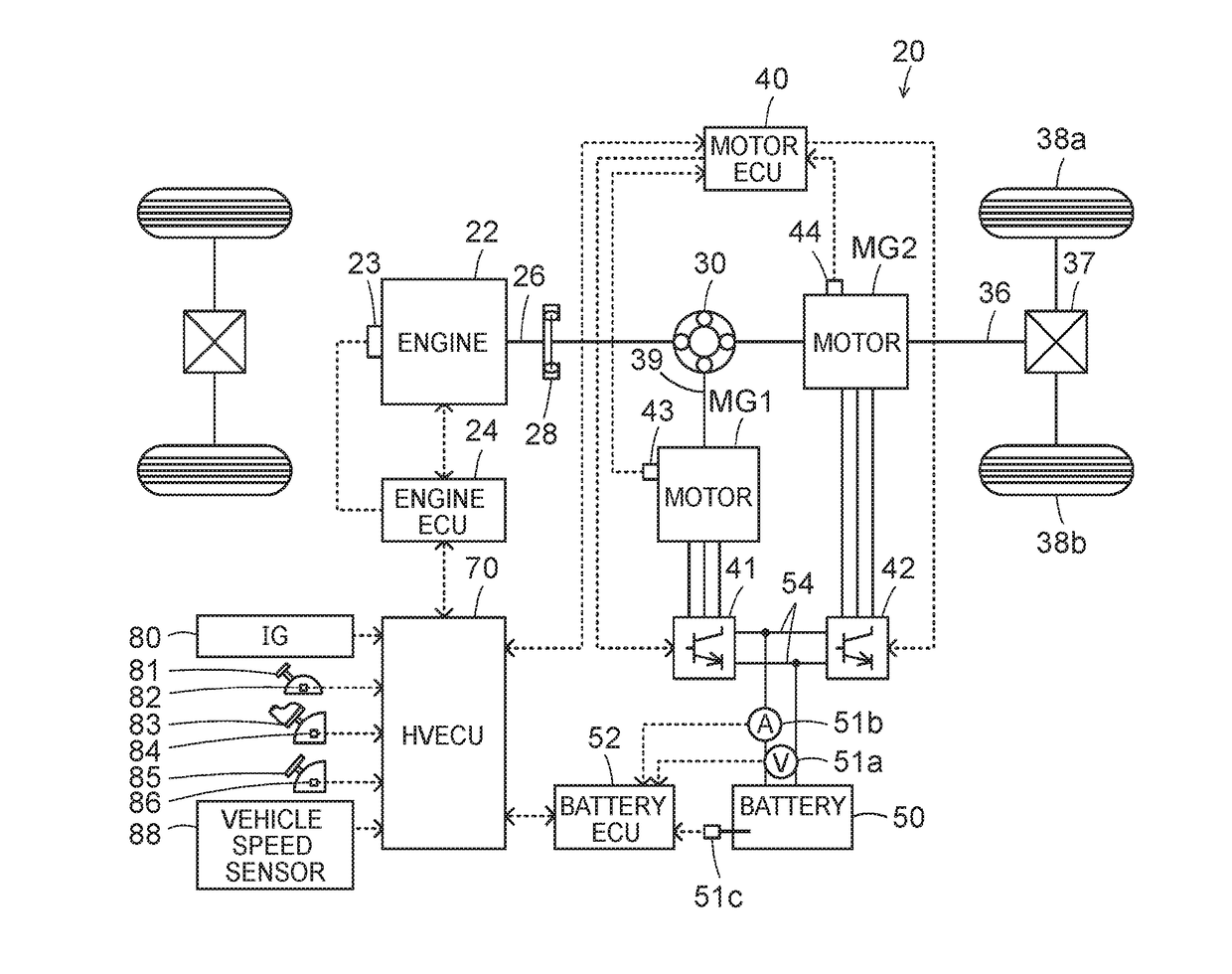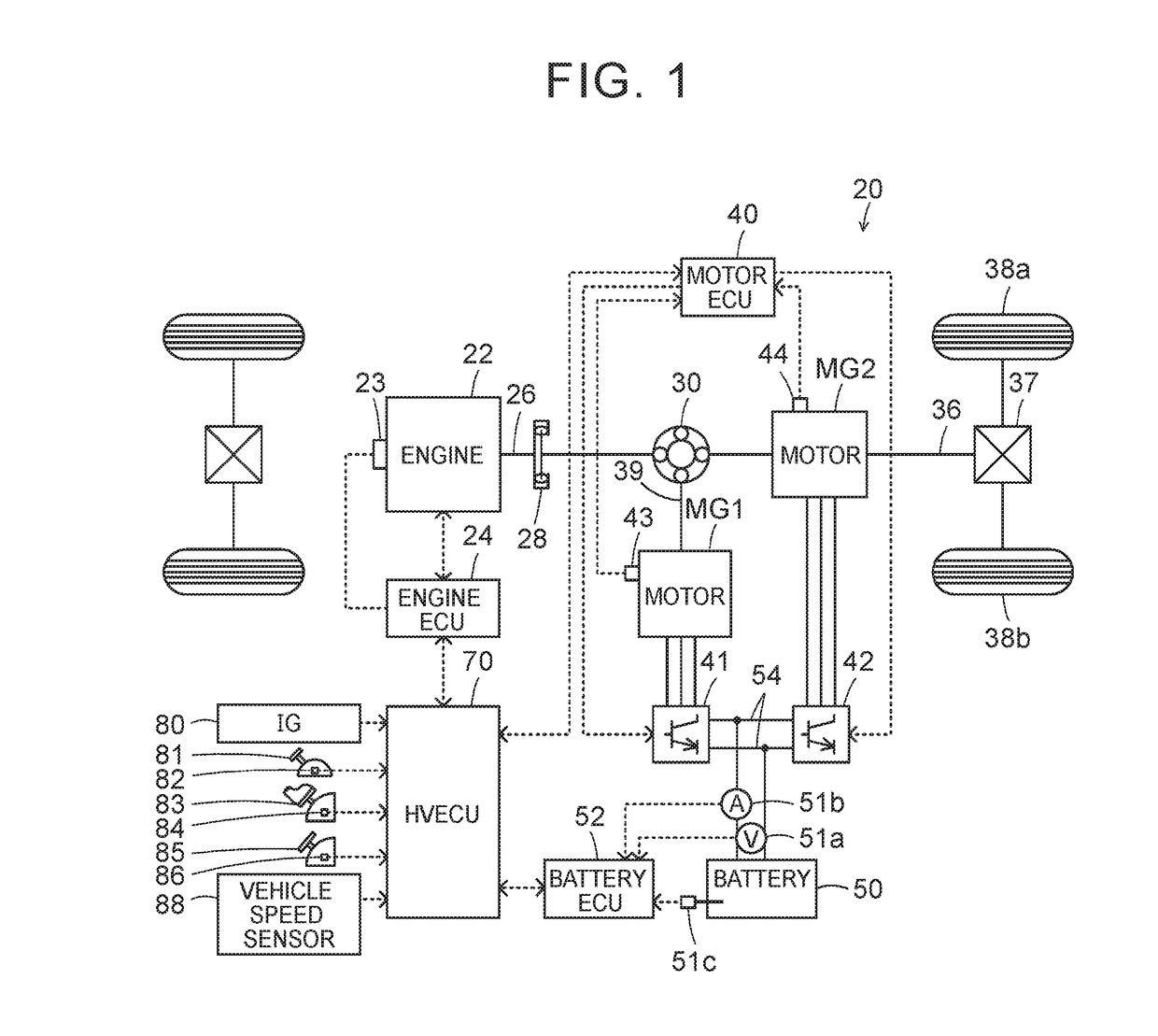Hybrid vehicle
a hybrid vehicle and hybrid technology, applied in the direction of propulsion parts, propulsion using engine-driven generators, transportation and packaging, etc., can solve the problems of increasing the engine speed per, driver possibly receiving a sense of discomfort, etc., to reduce increase the charge of the battery, and shorten the charge. effect of the charg
- Summary
- Abstract
- Description
- Claims
- Application Information
AI Technical Summary
Benefits of technology
Problems solved by technology
Method used
Image
Examples
Embodiment Construction
[0022]Next, embodiments of the present disclosure are described.
[0023]FIG. 1 is a configuration diagram that shows a schematic configuration of a hybrid vehicle 20 as the embodiment of the present disclosure. As shown in the drawing, the hybrid vehicle 20 of the embodiment includes an engine 22, a planetary gear 30, motors MG1, MG2, inverters 41, 42, a battery 50, and a hybrid electronic control unit (hereinafter referred to as an “HVECU”) 70.
[0024]The engine 22 is configured as an internal combustion engine that outputs power by using gasoline, diesel oil, or the like as fuel. An operation of this engine 22 is controlled by an engine electronic control unit (hereinafter referred to as an “engine ECU”) 24.
[0025]Although not shown, the engine ECU 24 may be configured as a microprocessor that has a CPU as a central component, and may include, in addition to the CPU, a ROM that stores a processing program, a RAM that temporarily stores data, input / output ports, and a communication port...
PUM
 Login to View More
Login to View More Abstract
Description
Claims
Application Information
 Login to View More
Login to View More - R&D
- Intellectual Property
- Life Sciences
- Materials
- Tech Scout
- Unparalleled Data Quality
- Higher Quality Content
- 60% Fewer Hallucinations
Browse by: Latest US Patents, China's latest patents, Technical Efficacy Thesaurus, Application Domain, Technology Topic, Popular Technical Reports.
© 2025 PatSnap. All rights reserved.Legal|Privacy policy|Modern Slavery Act Transparency Statement|Sitemap|About US| Contact US: help@patsnap.com



